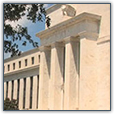View by year
2020

How Do Principal Trading Firms and Dealers Trade around FOMC Statement Releases?
This FEDS Note examines how different types of market participants transact in the Treasury market in the periods immediately following statement releases at the conclusion of Federal Open Market Committee (FOMC) meetings. We compare intermediation patterns following scheduled statement releases with those following an unscheduled statement release.
DOI: https://doi.org/10.17016/2380-7172.2827

Remittances and COVID-19: A Tale of Two Countries
Looking at the effects of the COVID-19 pandemic on workers’ remittances flowing from the United States, this article focuses on the experiences of two countries, El Salvador and Mexico, which account for approximately 30 percent of all immigrants currently residing in the United States. Following the second quarter’s economic lockdown, transfers to these countries experienced perplexing dynamics. Specifically, remittances to El Salvador witnessed a record 40 percent sudden drop, while Mexico recorded an unexpected 35 percent increase. We discuss some of the narratives proposed to explain this puzzling evidence and propose some alternative hypotheses.
DOI: https://doi.org/10.17016/2380-7172.2803

Why Were Treasury Yields So Stable Over the Summer?
Early this year, economic activity plummeted as COVID-19 cases around the world surged and governments enacted restrictions to mitigate the spread of the virus. Over the summer, as restrictions were gradually lifted, the near-term outlook for the economy improved and economic data prints began to come in stronger than expected.
DOI: https://doi.org/10.17016/2380-7172.2824

Information and Liquidity in the Market for Foreign Currency Denominated Sovereign Bonds
This note finds a negative, non-linear relationship between bond yield and liquidity using data on Portuguese, Irish, Italian, Greek, and Spanish (PIIGS) sovereign bonds from 2010-2015. This relationship is predicted by the asymmetric information model of bond liquidity by Holmstrom (2015) and Gorton (2017).
DOI: https://doi.org/10.17016/2380-7172.2821

Tokens and accounts in the context of digital currencies
This report provides an overview of two concepts that come up frequently in discussions of digital currencies: tokens and accounts. The meaning of each concept differs depending on context. For cryptocurrencies, the term "token" has a relatively straightforward, technology-specific definition. For central bank digital currencies (CBDC), the term "token" takes on more of a conceptual or analytical meaning. To further complicate matters, "tokens" and "accounts" are not always mutually exclusive ideas. This paper identifies areas where this terminology has caused confusion and explains why the terminology is problematic in an effort to improve the technical and conceptual discourse on digital currencies and the "tokenization" of financial assets.
DOI: https://doi.org/10.17016/2380-7172.2822

Globalization and the Reach of Multinationals Implications for Portfolio Exposures, Capital Flows, and Home Bias
The residence-based framework of measuring international exposure is increasingly less informative, as a growing number of firms locate in low-tax jurisdictions and issue securities through offshore subsidiaries. This has clouded the view of capital flows and investor exposures from standard sources such as the IMF Balance of Payments and the Coordinated Portfolio Investment Survey.
DOI: https://doi.org/10.17016/2380-7172.2829

Natural Disasters, Climate Change, and Sovereign Risk
Unexpected shocks may tip countries with elevated fiscal vulnerabilities into default. The literature has emphasized the role of macroeconomic and financial shocks, such as a decline of commodity prices (Reinhart et al., 2016) or banking crises (Baltenau and Erce, 2018) in shaping sovereign risk.
DOI: https://doi.org/10.17016/2380-7172.2813

Treasury Market Functioning During the COVID-19 Outbreak: Evidence from Collateral Re-use
In March 2020, uncertainty over the COVID-19 pandemic caused severe stress in U.S. financial markets. Specifically, Fleming and Ruela (2020) document a severe impairment of Treasury market functioning, as indicated by a sharp increase in bid/ask spreads, a decline in market depth, and an increase in price impact measures.
DOI: https://doi.org/10.17016/2380-7172.2755

Interest Coverage Ratios: Assessing Vulnerabilities in Nonfinancial Corporate Credit
This note examines whether the ability of nonfinancial corporations to meet their interest expenses out of earnings is a vulnerability for financial stability under current economic conditions. We measure this ability using the interest coverage ratio (ICR)—the ratio of earnings before interest and taxes relative to interest expenses—and project this ratio under different scenarios.
DOI: https://doi.org/10.17016/2380-7172.2779

Dementia Harms Household Finances Years before Clinical Recognition
Alzheimer's Disease and Related Dementias (ADRD) are medical conditions characterized by deteriorating cognitive functions that are estimated to impact nearly 12 million older Americans by 2050. ADRD impedes independence in daily activities through symptoms including difficulties with memory and attention span, impaired judgement, and changing risk preferences. There are currently no effective medical treatments to delay or reverse symptoms of ADRD.
DOI: https://doi.org/10.17016/2380-7172.2825

How the Federal Reserve's central bank swap lines have supported U.S. corporate borrowers in the leveraged loan market
The cost of borrowing U.S. dollars through foreign exchange (FX) swap markets increased significantly in the beginning of the Covid-19 pandemic in February 2020, indicated by larger deviations from Covered Interest Rate Parity (CIP). CIP deviations narrowed again when the Federal Reserve expanded its swap lines to support U.S. dollar liquidity globally—by enhancing and extending its swap facility with foreign central banks and introducing the new temporary Foreign and International Monetary Authorities (FIMA) repurchase agreement facility.
DOI: https://doi.org/10.17016/2380-7172.2753

Stuck at home? The drag of homeownership on earnings after job separation
This note takes a novel approach to study the question of whether housing ownership has negative effects on workers' mobility. While most of the literature has focused on studying differential migration rates between owners and renters, commonly known as "house-lock", we analyze this question from the perspective of differences in earnings.
DOI: https://doi.org/10.17016/2380-7172.2802

Updating the Distributional Financial Accounts
In addition to incorporating 2020q2 data from the Financial Accounts, the 2020q2 release of the Distributional Financial Accounts (DFAs) includes three substantial updates. The most consequential is the incorporation of the newly released 2019 Survey of Consumer Finances (SCF).
DOI: https://doi.org/10.17016/2380-7172.2810

Short-Term Funding Stresses and Asset Prices: Lessons from U.S. History
Recent stress episodes in U.S. short-term dollar funding markets have brought renewed attention to the functioning of these markets and how they interact with capital markets more generally. The history of U.S. money markets and stock and bond markets before the founding of the Federal Reserve offer a unique perspective on how the structure of money markets can contribute to broader asset price fluctuations.
DOI: https://doi.org/10.17016/2380-7172.2582

The Stability of Safe Asset Production
A safe asset is a debt instrument that is expected to maintain its value over time, especially during adverse systemic events. Changes in the supply of safe assets can have a significant influence on short-term, risk-free interest rates. (Ferreira & Shousha, 2020) "When the scarcity of safe asset[s] is acute, the zero lower bound (ZLB) becomes binding and the safe asset market equilibrates via a reduction in output…"
DOI: https://doi.org/10.17016/2380-7172.2787

Central Bank Digital Currency: A Literature Review
Technological advances in recent years have led to a growing number of fast, electronic means of payment available to consumers for everyday transactions, raising questions for policymakers about the role of the public sector in providing a digital payment instrument for the modern economy. From a theoretical standpoint, the introduction of a central bank digital currency (CBDC) raises long-standing questions relating to the provision of public and private money (Gurley and Shaw 1960), and the ability of the central bank to use CBDC as a means for transmitting monetary policy directly to households (Tobin 1985).
DOI: https://doi.org/10.17016/2380-7172.2790

Closing the Monetary Policy Curriculum Gap: A Primer for Educators Making the Transition to Teaching the Fed's Ample-Reserves Framework
The Federal Reserve (the Fed), the central bank of the United States, has a Congressional mandate to promote maximum employment and price stability. While those goals were articulated in 1977, the approach and tools used to implement those objectives have changed over time.
DOI: https://doi.org/10.17016/2380-7172.2754

What Drove Recent Trends in Corporate Bonds and Loans Usage?
U.S. nonfinancial business debt increased substantially in recent years in both absolute and relative terms and is now near its record high. Figure 1 shows that most of this increase was due to significant growth in investment-grade (IG) corporate bonds and institutional leveraged loans, while high-yield (HY) corporate bonds and C&I loans largely remained steady.
DOI: https://doi.org/10.17016/2380-7172.2789

The Effects of the COVID-19 Shutdown on the Consumer Credit Card Market: Revolvers versus Transactors
The consumer credit card market has experienced dramatic, unprecedented changes in the wake of the COVID-19 shutdown of the U.S. economy. Revolving credit in the G.19 Consumer Credit statistical release fell by an annualized rate of 32 percent in the second quarter of 2020.
DOI: https://doi.org/10.17016/2380-7172.2792

Electricity Demand as a High-Frequency Economic Indicator: A Case Study of the COVID-19 Pandemic and Hurricane Harvey
Electricity is used by all businesses in the United States. During quickly moving economic shocks—for example, a pandemic or natural disaster—changes in electricity consumption can provide insight to policymakers before traditional survey-based metrics, which can lag weeks or months behind economic conditions and typically only show a snapshot of when the survey was conducted.
DOI: https://doi.org/10.17016/2380-7172.2781

Improving Housing Payment Projections during the COVID-19 Pandemic
COVID-19 caused widespread job loss, raising concerns about whether people can still cover their rent or mortgage expenses. Policymakers and researchers are working to understand the effects of the pandemic on housing payments and predict future payment rates.
DOI: https://doi.org/10.17016/2380-7172.2772

Beyond imports: the supply chain effects of trade protection on export growth
The United States imposed a series of wide-ranging increases in import tariffs from 2018 through 2019. By August of 2019, $290 billion of U.S. imports - about 12% of the total - were subject to an average tariff increase of 24 percentage points.
DOI: https://doi.org/10.17016/2380-7172.2751

The Stock Market–Real Economy "Disconnect": A Closer Look
Between March and September 2020, broad equity price indexes around the world experienced a historic rally. Although this rally followed a significant decline in stock prices, it appears difficult to explain due to continuing concerns about the global pandemic and national economies running far below their potentials.
DOI: https://doi.org/10.17016/2380-7172.2800

Macroeconomic news and stock prices over the FOMC cycle
We develop novel macroeconomic surprise indices to identify the impact of macroeconomic releases on aggregate stock market returns over the FOMC cycle. We find that the aggregate stock prices are positively correlated with our real economic activity news index and negatively correlated with our price news index.
DOI: https://doi.org/10.17016/2380-7172.2745

Fire-Sale Vulnerabilities of Banks: Bank-Specific Risks under Stress and Credit Drawdowns
One channel of shock propagation in the financial system is fire-sale-driven spillover that can take place through asset fire sales and the resulting effect of depressed asset prices on the value of firms' assets. Heightened leverage then induces firms to de-lever, triggering another round of asset fire sales.
DOI: https://doi.org/10.17016/2380-7172.2589

The Corporate Bond Market Crises and the Government Response
The Covid-19 pandemic led to acute stress in the global economy and, as a consequence, many parts of the global financial system. In the U.S., when concerns over the coronavirus escalated in March, many financial markets were hit by extraordinary selling pressure.
DOI: https://doi.org/10.17016/2380-7172.2769

The Impact of COVID-19 on Emerging Market Economies' Financial Conditions
The emerging market economies (EMEs) – and the lower-income developing economies to an even greater extent – generally are extremely vulnerable to the COVID-19 pandemic. Many EMEs have weak public health systems, poor and financially vulnerable populations, inadequate social safety nets, limited monetary and especially fiscal policy space, and high exposure to global trade and commodity prices.
DOI: https://doi.org/10.17016/2380-7172.2749

Implementing Monetary Policy in an “Ample-Reserves” Regime: When in Crisis (Note 3 of 3)
Note 1 and Note 2 in this three-part series described how the Federal Reserve (or Fed) implements monetary policy in normal times, with an ample quantity of reserves in the banking system. In this third and final Note in our series, we take a detour in light of current circumstances and describe how the Fed operates amid a crisis—when facing severely strained economic or financial circumstances, or both.
DOI: https://doi.org/10.17016/2380-7172.2744

Wealth and Income Concentration in the SCF: 1989–2019
Using 2019 SCF data, we update estimates of the U.S. wealth and income distributions. These data indicate that wealth concentration in 2019 was similar to the levels seen in 2016 and near the historical high over the 1989–2019 period. Income concentration similarly remains high but declined between 2016 and 2019.
DOI: https://doi.org/10.17016/2380-7172.2795

Disparities in Wealth by Race and Ethnicity in the 2019 Survey of Consumer Finances
New data from the 2019 Survey of Consumer Finances (SCF) show that long-standing and substantial wealth disparities between families in different racial and ethnic groups were little changed since the last survey in 2016; the typical White family has eight times the wealth of the typical Black family and five times the wealth of the typical Hispanic family.
DOI: https://doi.org/10.17016/2380-7172.2797

What Do Quoted Spreads Tell Us About Machine Trading at Times of Market Stress? Evidence from Treasury and FX Markets during the COVID-19-Related Market Turmoil in March 2020
We highlight four main results from our analysis. First, we find that quoted spreads did not merely rise to much higher than usual levels on average, but were also oscillating over a wider range; while at some points within the day spreads were substantially wider than on a typical day, at other times spreads were as narrow as on a typical day. This result suggests that market participants, likely including both dealers and PTFs, became less willing to replenish the order book fast enough to keep quoted bid-ask spreads consistently tight in these markets, which may have amplified the initial shock to liquidity, particularly for the 30-year bond. Second, using alternative volume-weighted quoted spread measures we put forward in this note, we also find evidence that some market participants employing machine trading strategies were nonetheless able to mitigate the increase in trading costs—by executing trades when bid-ask spreads were relatively tight. Third, we further document that liquidity conditions in Treasury futures markets deteriorated less than those in Treasury cash markets. Fourth, we find that quoted spreads in other liquid futures markets, such as those for major foreign exchange (FX) rates, increased notably more than most of the Treasury futures market (the exception being the 30-year Ultra Treasury bond futures contract). Our findings thus point to the systemic nature of the market strains in March, extending beyond differences in market structure and participation. Our findings also underscore the potential benefits from the use of sophisticated algorithmic execution strategies that can adapt rapidly to changing liquidity conditions.
DOI: https://doi.org/10.17016/2380-7172.2748

Retrospective: The Agency MBS Market on October 15, 2014
Five years have passed since the Joint Staff Report (JSR) on the US Treasury Market on October 15, 2014 was published. In addition to analyzing the events in Treasury markets on that day, the JSR also outlined next steps for the official sector to take in its study of the evolving structure of the US Treasury market. Importantly, it advised "further study of the evolution of the US Treasury market and its implications for market structure and liquidity." In this spirit, and to complement other work published on the topic, in this note we take a look back at events in the agency MBS market on October 15, 2014 in order to build a more complete picture of what transpired in fixed income markets on that day.
DOI: https://doi.org/10.17016/2380-7172.2623

Avoiding Sovereign Default Contagion: A Normative Analysis
Sovereign debt crises happen in waves, spreading from one country to the other. The euro-area debt crisis of 2011-12 is a good example of that. Stress in the sovereign debt market quickly spread from Greece and Ireland to Portugal, Spain, and Italy.
DOI: https://doi.org/10.17016/2380-7172.2600

Central Banks' Financial Stability Communications during the COVID-19 Pandemic
The COVID-19 pandemic has led to the implementation of unprecedented policy actions by central banks around the world. Along with the reduction of interest rates and the use of asset purchase and lending programs, central bank communications have been actively deployed as a policy tool.
DOI: https://doi.org/10.17016/2380-7172.2741

SRISKv2 - A Note
SRISK is a very influential metric of the systemic risk posed by financial firms. However, SRISK suffers from a conceptual flaw in its capital shortfall calculation. This note proposes a modified version of this metric, SRISKv2, which corrects this flaw and provides a more sensible metric of the systemic risk posed by financial firms.
DOI: https://doi.org/10.17016/2380-7172.2724

Underlying Inflation: Its Measurement and Significance
Underlying inflation is the rate of inflation that would be expected to eventually prevail in the absence of economic slack, supply shocks, idiosyncratic relative price changes, or other disturbances. Underlying inflation is a useful benchmark for monetary policy in that it provides an idea of the rate of price change that would be expected to obtain under "normal" circumstances in an economy where the level of resource utilization is putting neither upward nor downward pressure on inflation.
DOI: https://doi.org/10.17016/2380-7172.2624

Index of Common Inflation Expectations
Data that are potentially informative about the inflation expectations of economic agents have grown over recent years and now include information from a wide variety of surveys as well as from financial instruments. These data differ along several key dimensions, including the type of economic agent, the horizon of the expectation, the source of data (survey versus market-based measures), and the associated inflation concept, which can make the co-movement of various expectations measures difficult to discern.
DOI: https://doi.org/10.17016/2380-7172.2551

Conflicting Signals: Implications of Divergence in Surveys and Market-Based Measures of Policy Expectations
Divergent signals can arise between survey-based and market-derived measures of policy expectations. In such situations, there is an open question of how one might interpret these divergent signals.
DOI: https://doi.org/10.17016/2380-7172.2568

Implementing Monetary Policy in an “Ample-Reserves” Regime: Maintaining an Ample Quantity of Reserves (Note 2 of 3)
In this second note, we describe some important influences on the supply of and demand for reserves and how the Fed will need to account for these influences in maintaining an ample quantity of reserves over the long run. These considerations are most relevant in normal times, not in periods in which there are severe strains in financial markets or weakness in economic activity that necessitate aggressive policy actions by the Fed that substantially increase reserves.
DOI: https://doi.org/10.17016/2380-7172.2553

The Federal Reserve’s Review of Its Monetary Policy Framework: A Roadmap
In early 2019, the Federal Open Market Committee (FOMC or the Committee) launched a comprehensive review of its monetary policy framework (MPF)—the strategies, tools, and communication practices employed by the Federal Reserve to achieve its congressionally mandated goals of maximum employment and price stability.
DOI: https://doi.org/10.17016/2380-7172.2767

Fixed Income Market Structure: Treasuries vs. Agency MBS
This FEDS Note analyzes the structure of the agency mortgage-backed securities (MBS) market through the lens of the TRACE Treasury data initiative, which is a significant component of a broader inter-agency effort to enhance understanding and transparency of the Treasury securities market. As in several previous FEDS Notes describing the Treasury cash market structure, this note uses transactions reported to the Financial Industry Regulatory Authority (FINRA)'s Trade Reporting and Compliance Engine (TRACE) to examine aggregate trading volumes in the agency MBS market across venues, security types and participants. We show how agency MBS provide a useful counterfactual to cash Treasuries when analyzing the evolution of Treasury cash market structure and its implications for liquidity. We provide evidence that the participation of Principal Trading Firms (PTFs) in Treasury markets has caused the overall volume of intermediation to rise there, particularly in the interdealer broker (IDB) venue. We also find that, relative to Treasury markets, intermediation in the agency MBS market is concentrated among fewer firms, and in particular the primary dealers, suggesting that PTF participation in Treasury markets has diversified intermediation in the IDB venue across a larger number of firms.
DOI: https://doi.org/10.17016/2380-7172.2622

Worker Churn at Establishments over the Business Cycle
This note decomposes worker churn (which occurs when business establishments have simultaneous hiring and separations) into two components using monthly Job Opening and Labor Turnover Survey responses from the U.S. Bureau of Labor Statistics. On average, nearly a third of worker churn was "employer-initiated" through layoffs and two thirds was "quit initiated" over the 2001 to 2016 period.
DOI: https://doi.org/10.17016/2380-7172.2379

Comparing Means of Payment: What Role for a Central Bank Digital Currency?
This paper looks at the potential benefit that a central bank digital currency (CBDC) could provide in the context of existing payment mechanisms. Central banks today provide the primary payment mechanisms for trade and commerce: cash, used by the public, and electronic payment services, used by eligible financial institutions.
DOI: https://doi.org/10.17016/2380-7172.2739

Observations from the FooWire Project: Experimenting with DLT for Payments Use
In 2019, a team at the Federal Reserve Board (Board) conducted small-scale experimentation, named the "FooWire project," to build a payment system using distributed ledger technology (DLT). The team built the system using Hyperledger Fabric, a popular DLT platform, because it generally met the team's design requirements of a closed network, mature technology, and enterprise readiness.
DOI: https://doi.org/10.17016/2380-7172.2737

The Cost Structure of Consumer Finance Companies and Its Implications for Interest Rates: Evidence from the Federal Reserve Board's 2015 Survey of Finance Companies
Interest includes compensation not only for forbearance (forgoing current income for future income) and risk bearing but also compensation for expenses incurred to originate, service, and collect loans. The latter expenses are largely fixed, not varying much with the amount of credit.
DOI: https://doi.org/10.17016/2380-7172.2610

Are There Competitive Concerns in “Middle Market” Lending?
This note analyzes competition and concentration in "middle market" lending using loan level data obtained from large bank holding companies' Y14 reports to the Federal Reserve. The middle market segment is typically considered to be credit for firms larger than small businesses but too small for large-scale commercial lending or syndicated credit. Lender choice and the supply of credit to large and small firms has been studied extensively by academics and policy makers.
DOI: https://doi.org/10.17016/2380-7172.2618

An Early Evaluation of the Effects of the Pandemic on Living Arrangements and Household Formation
As with many other aspects of life—including the record-setting decline in employment—the COVID-19 pandemic has profoundly affected the living arrangements of millions of Americans. In this note, we document a fact that has as yet received little attention:
DOI: https://doi.org/10.17016/2380-7172.2735

Principal Trading Firm Activity in Treasury Cash Markets
This FEDS Note aims to share insights on Treasury cash transactions reported in the Financial Industry Regulatory Authority (FINRA)'s Trade Reporting and Compliance Engine (TRACE). Following earlier joint FEDS Notes and Liberty Street Economics blog posts that examined aggregate trading volume in the Treasury cash market across venues and security types, this post sheds light on the trading activity of Principal Trade Firms (PTFs) and other market participants that are not registered broker-dealer members of FINRA.
DOI: https://doi.org/10.17016/2380-7172.2620

New Financial Market Measures of the Neutral Real Rate and Inflation Expectations
Long-term U.S. interest rates have fallen substantially over the last two decades. The 5-to-10-year nominal forward interest rate implied by the prices of U.S. Treasury securities is now about 7 percentage points lower than it was at the start of the 1990s.
DOI: https://doi.org/10.17016/2380-7172.2621

Monitoring Risk From Collateral Runs
We present an estimate of the total amount of funds primary dealers can access from the intermediation of cash and securities through secured funding transactions (SFTs). We highlight how this activity can introduce an additional source of risk: the abrupt withdrawal of cash borrowers, which we call collateral runs.
DOI: https://doi.org/10.17016/2380-7172.2605

How Did Banks Fund C&I Drawdowns at the Onset of the COVID-19 Crisis?
Banks experienced significant balance sheet expansions in March 2020 due to unprecedented increases in commercial and industrial (C&I) loans and deposit funding. According to the Federal Reserve's H.8 data, "Assets and Liabilities of Commercial Banks in the U.S.", C&I loans increased by nearly $480 billion in March—the largest monthly increase in the history of this series, surpassing the nearly $90 billion increase in C&I loans in the six weeks following Lehman Brothers' collapse in 2008.
DOI: https://doi.org/10.17016/2380-7172.2601

Dealer Inventory Constraints during the COVID-19 Pandemic: Evidence from the Treasury Market and Broader Implications
Strains in the Treasury market in March indicated a decline in broker-dealer inventory capacity, which has historically predicted persistent reductions in market liquidity across asset classes, the availability of financing for non-financial firms, and real activity.
DOI: https://doi.org/10.17016/2380-7172.2581

The Increasing Deflationary Impact of Consumer Digital Access Services
Although U.S. consumer price statistics are prone to upward bias, they remain useful if imperfect accounting has a known and stable effect (Boskin et al., 1998; Moulton, 2018). For example, monetary authorities may set a target for measured inflation higher than their objective for true inflation if official measures are routinely overstated (Bernanke and Mishkin, 1997).
DOI: https://doi.org/10.17016/2380-7172.2619

A New Indicator of Common Wage Inflation
The cyclical state of the economy and the natural rate of unemployment are key unobserved variables in policymakers' analysis of economic developments. The price Phillips curve relates the measures of resource utilization—often through deviations of the unemployment rate from the natural rate of unemployment—to consumer price inflation.
DOI: https://doi.org/10.17016/2380-7172.2550

Modeling the Global Effects of the COVID-19 Sudden Stop in Capital Flows
The COVID-19 outbreak has triggered unusually fast outflows of dollar funding from emerging market economies (EMEs). These outflows are known as sudden stop episodes, and are typically followed by economic contractions.
DOI: https://doi.org/10.17016/2380-7172.2586

Implementing Monetary Policy in an "Ample-Reserves" Regime: The Basics (Note 1 of 3)
The FOMC has stated that it intends to continue implementing monetary policy in a regime with an ample supply of reserves. This Note, the first in a three-part series, provides an introductory discussion of what it means to implement policy in such a regime and how the Fed ensures interest rate control in an environment with an ample supply of reserves in the banking system.
DOI: https://doi.org/10.17016/2380-7172.2552

How Correlated is LIBOR with Bank Funding Costs?
In a recent article in the BIS Quarterly Review, authors Schrimpf and Sushko (2019) provide an overview of the LIBOR transition to risk-free rates led by the FSB Official Sector Steering Group (OSSG). They also argue that rates like LIBOR may be desirable because banks “require a lending benchmark that behaves not too differently from the rates at which they raise funding.”
DOI: https://doi.org/10.17016/2380-7172.2539

Who Owns U.S. CLO Securities? An Update by Tranche
Against the backdrop of the COVID-19 crisis, leveraged loans have deteriorated and concerns about CLOs, the main buyers of loans on the secondary market, have increased. These concerns have reduced the demand for new CLOs, making it harder for firms to borrow through leveraged loans on the primary market, as banks have found it more difficult to sell loans on the secondary market.
DOI: https://doi.org/10.17016/2380-7172.2592

Measuring the Natural Rate of Interest: The Role of Inflation Expectations
The "natural" or equilibrium real rate of interest is an important concept in macroeconomics. On the one hand, the natural (real) rate provides a description of the real interest rate path consistent with the eventual full capacity of utilization of available resources in the context of low and stable inflation.
DOI: https://doi.org/10.17016/2380-7172.2593

How do Rural and Urban Retail Banking Customers Differ?
This note documents differences and similarities between rural and urban retail banking clients using data from the Board's Survey of Consumer Finances (SCF). Understanding geographic differences in local demand conditions for banking is important for designing effective public policy.
DOI: https://doi.org/10.17016/2380-7172.2513

Assessing the Resiliency of Non-DFAST Banks to a Financial Shock
Every year the Federal Reserve Board conducts stress tests on large bank holding companies (BHCs) to ensure that those institutions will remain healthy enough to lend to households and businesses even in a significant downturn. This note analyzes the resiliency of the banking industry by also stressing banks that are not subject to that annual Dodd-Frank Act stress test (DFAST).
DOI: https://doi.org/10.17016/2380-7172.2514

Monitoring the Liquidity Profile of Mutual Funds
Policymakers and academics have been particularly attuned to the issues of liquidity transformation and first mover advantage at open-end mutual funds.Open-end mutual funds engage in liquidity transformation because they promise one-day redemptions on their assets, even when the invested assets have low or uncertain liquidity.
DOI: https://doi.org/10.17016/2380-7172.2558

The Geography of Small Business Dynamics
Business dynamism is a micro-foundation for economic growth. Productivity gains come from a reallocation of resources from less efficient to more efficient firms, often through entry of new firms and exit of existing firms.
DOI: https://doi.org/10.17016/2380-7172.2580

A Comparison of Living Standards Across the States of America
While a large body of literature has examined how welfare, or living standards, vary across countries, very little is known about how welfare varies within a given country. This note summarizes and discusses the analysis and results in Falcettoni and Nygaard (2020), where we seek to fill this gap in the context of the United States.
DOI: https://doi.org/10.17016/2380-7172.2545

Analyzing the Community Bank Leverage Ratio
This note analyzes the newly introduced Community Bank Leverage Ratio ("CBLR") framework. The analysis covers the framework's eligibility, its capital stringency, and its potential impact on system-wide capital levels under a hypothetical adverse scenario.
DOI: https://doi.org/10.17016/2380-7172.2516
How do children spend their time? Time use and skill development in the PSID
As income and wealth inequality have grown in the United States in recent decades, the large and growing differences in household expenditures on children from advantaged versus disadvantaged backgrounds have increasingly become a matter of public concern. High socioeconomic status (SES) households (those with high incomes and/or high levels of parental education) increasingly spend more money on physical goods (books, tuition, computers, etc.) and more time on "enrichment" activities such as homework, tutoring, reading, and extracurricular activities that are thought to directly foster cognitive (academic) skills.
DOI: https://doi.org/10.17016/2380-7172.2577

Real Effects of Uncertainty: Evidence from Brexit
In the historic Brexit referendum on June 23, 2016, U.K. citizens voted in favor of leaving the European Union (EU), a result that created substantial uncertainty regarding the future economic relationship between the United Kingdom and the EU. As can be seen in Figure 1, uncertainty, measured by the Economic and Policy Uncertainty (EPU) index of Baker et al. (2016), spiked around the Brexit referendum date and has remained elevated relative to its pre-referendum levels since then.
DOI: https://doi.org/10.17016/2380-7172.2536

An Aggregate View of Bank Lending Standards and Demand
The Senior Loan Officer Opinion Survey on Bank Lending Practices (SLOOS) provides information about the supply of, and demand for, bank credit in the United States on a quarterly basis. SLOOS responses are used internally by Federal Reserve staff in monitoring bank lending conditions and as an input into research and analysis about broader economic and financial conditions.
DOI: https://doi.org/10.17016/2380-7172.2546

How Much Does Home Equity Extraction Matter for Spending?
In this note, we investigate recent trends in home equity extraction and how these trends may have impacted household spending and residential improvements. Home equity extractions—which rose and fell with house prices in the 1990s and 2000s—have remained sluggish in the recovery despite low interest rates and gains in home equity. Compared to the mid-2000s, equity extractions have fallen especially among younger households and those with lower credit scores and higher leverage, suggesting that mortgage credit supply is likely tighter than before the recession, at least for portions of the population.
DOI: https://doi.org/10.17016/2380-7172.2535

Regulatory Arbitrage in the Use of Insurance in the New Standardized Approach for Operational Risk Capital
Basel's new standardized approach (SA) for operational risk capital may allow for regulatory arbitrage through the use of insurance. Under the SA, banks will have incentive to insure recurring losses, which can meaningfully reduce capital requirements even as it does not meaningfully decrease tail operational loss exposure. Several alternatives to deal with this regulatory arbitrage strategy are discussed.
DOI: https://doi.org/10.17016/2380-7172.2479

The Great Recession and a Missing Generation of Exporters
While the large collapse in aggregate international trade volumes during the Great Recession has been widely studied in the literature, the recovery is much less well understood. Indeed, by 2014 U.S. foreign sales were still below their historical post-recession level. In this note, we summarize the results of Lincoln, McCallum, and Siemer (2019), which considers how much of a role a "missing generation of exporters" played in explaining the relatively slow growth of foreign sales after the financial crisis.
DOI: https://doi.org/10.17016/2380-7172.2531

Common and idiosyncratic inflation
In this note, we disentangle changes in prices due to economy-wide (common) shocks from changes in prices due to idiosyncratic shocks.
DOI: https://doi.org/10.17016/2380-7172.2508

What Happened in Money Markets in September 2019?
In mid-September 2019, overnight money market rates spiked and exhibited significant volatility, amid a large drop in reserves due to the corporate tax date and increases in net Treasury issuance.
DOI: https://doi.org/10.17016/2380-7172.2527

The Liquidity Coverage Ratio and Corporate Liquidity Management
This note examines the changes in the liquidity management at banks and nonbank financial firms in the United States that occurred following the proposal of the liquidity coverage ratio (LCR) requirement in 2010 and its finalization in 2014.
DOI: https://doi.org/10.17016/2380-7172.2509

Wealth concentration levels and growth: 1989-2016
Wealth concentration in the U.S. has increased over the past 25 years across multiple methodologies for measuring wealth. But the reasons for the increase—and the timing of the increase—are quite different. In this note, we show that most available estimates are fairly consistent in level and trend prior to the Financial Crisis. However, the timing and reasons for the sharp increase in wealth concentration during and after the crisis differ remarkably across methods. We describe some of the factors that underlie this divergence.
DOI: https://doi.org/10.17016/2380-7172.2438

What Happened to U.S. Business Dynamism?
The U.S. economy has witnessed a number of striking trends that indicate a rising market concentration and a slowdown in business dynamism in recent decades. We attempt to understand potential common forces behind these empirical regularities through the lens of a micro-founded general equilibrium model of endogenous firm dynamics.
DOI: https://doi.org/10.17016/2380-7172.2497

What Happened to Foreign Direct Investment in the United States?
This note demonstrates that the slowdown in FDIUS can be explained by two special factors: 1) a handful of corporate restructurings that are purely tax- and regulation-driven and affect the equity portion of direct investment flows, and 2) a reversal in intercompany debt flows that are often the result of corporate tax planning.
DOI: https://doi.org/10.17016/2380-7172.2499

How Global Value Chains Change the Trade-Currency Relationship
This note summarizes the main results of the de Soyres et al. (2018) paper, drawing out the most policy-relevant implications.
DOI: https://doi.org/10.17016/2380-7172.2504

How Do U.S. Global Systemically Important Banks Lower Their Capital Surcharges?
In this note, we examine whether and how U.S. G-SIBs adjust their systemic importance indicators to lower their surcharges.
DOI: https://doi.org/10.17016/2380-7172.2480

Goods-Market Frictions and International Trade
The difficulty of locating and building connections with overseas buyers is a prevalent firm-level barrier to exporting. Producers and retailers must spend time and resources to find one another before they can transact.
DOI: https://doi.org/10.17016/2380-7172.2501

Raising the Inflation Target: Lessons from Japan
In January 2013, the Bank of Japan increased its inflation target from 1 percent to 2 percent in an effort to end chronic deflation that had lasted for more than a decade. In this note, the author reviews this Japanese experience and highlights possible lessons for other central banks that may be interested in examining the possibility of raising their inflation target at some point in the future.
DOI: https://doi.org/10.17016/2380-7172.2493

Why Has Wage Growth Been Subdued in the Advanced Foreign Economies?
This note argues that certain factors, especially slower productivity growth and lower natural rates of unemployment, can explain much of the weakness of wage growth and the apparent breakdown of the simple wage Phillips curve.
DOI: https://doi.org/10.17016/2380-7172.2410

Monetary Policy Space in a Recession: Some Simple Interest Rate Arithmetic
As an alternative, two recession scenarios are presented in which interest rates change from October 2019 levels by the same amount as seen, on average, around the 1990 and 2001 recessions.
DOI: https://doi.org/10.17016/2380-7172.2484
Disclaimer: FEDS Notes are articles in which Board staff offer their own views and present analysis on a range of topics in economics and finance. These articles are shorter and less technically oriented than FEDS Working Papers and IFDP papers.